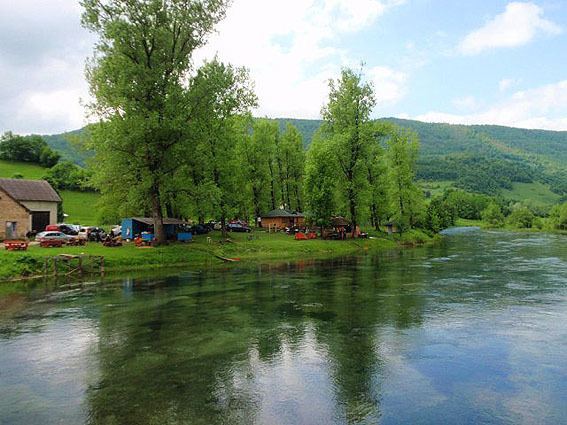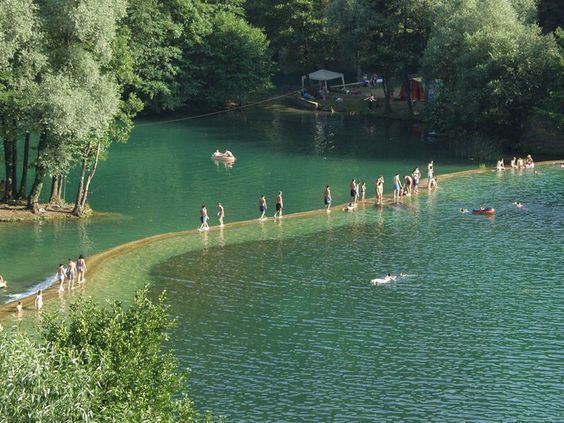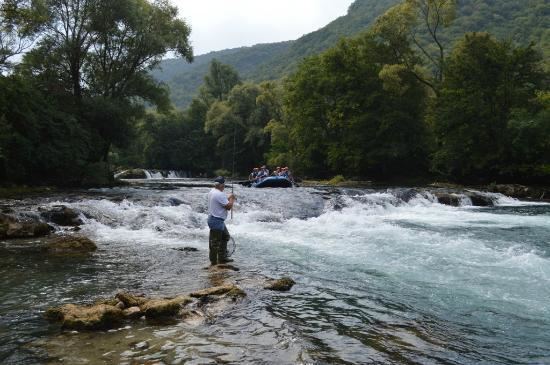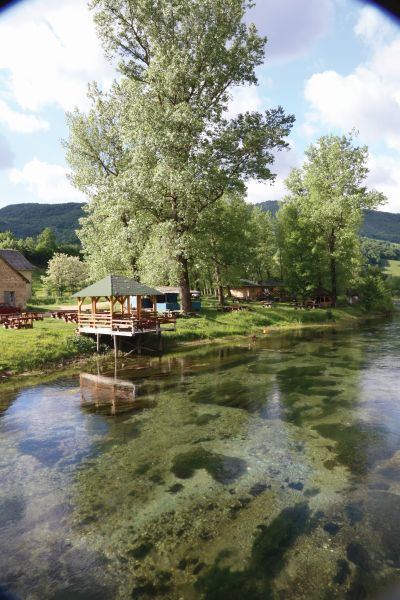- right Janj - average 3 m/s (106 cu ft/s) Basin area 768 km² Basin area 768 km² | - elevation 1,227 m (4,026 ft) Length 33 km Discharge 3 m³/s | |
 | ||
- location Smiljevac-Jastrebnjak mountain, Central Bosnia Canton, Central Bosnia and Herzegovina, Bosnia and Herzegovina Similar Pliva Waterfall, Una, Buna, Kravice, Štrbački buk | ||
Pliva is relatively small river in central parts of Bosnia and Herzegovina, however one of the most significant in terms of natural, cultural and historical heritage and value as a natural rarity. For hundreds of years this region was the ultimate stronghold of the Bosnian Kingdom, with town of Jajce as permanent seat of the last kings of Bosnian Kingdom. The entire region of Jajce is rich in natural heritage that cannot be viewed in isolation from the built heritage. In Jajce, these two components are closely intermingled.
Contents
Geography and hydrography

The Pliva valley is located in the northern part of central Bosnia and Herzegovina and known for its tranquil mountains rich in forests and abundance of nature, wildlife and especially bodies of water. The valley is dominated by two unique rivers, the Pliva and the Janj and two natural lakes on the Pliva river.
Hydrography and sectioning

The Pliva river flows from West to East, is 33 kilometers long, and has an average discharge artificially set for a biological minimum of 3.0 m³ near town of Jajce at the waterfall site. Total watershed area of the Pliva is 768 km². Its source is some 8 kilometers upstream of the town of Šipovo near Pljeva at the foot of the mountain of Smiljevac-Jastrebnjak, where the Pliva springs out from two very strong karstic springwells at 483 meters above seal level. The main tributary of the Pliva is the Janj, that flows into the Pliva from the right, in the center of the town of Šipovo. At the confluence, both the Janj and the Pliva are approximately the same size, and both rivers have the same amount of water. Some 12 kilometers downstream, at the village of Jezero, the Pliva flows into the largest of three lakes, Veliko Plivsko Lake, then into two smaller lakes: Malo Plivsko Lake and Okruglo Lake. After the Pliva river passes through the towns of Šipovo and Jezero, and through both Plivska lakes, it reaches the town of Jajce where it meets with the Vrbas river. The Pliva river is a left tributary of the Vrbas that, on its way north, flows into the Sava river, therefore the Pliva belongs to the Sava river basin.
Geo-hydrology

The river Pliva is characterized by the specific geological nature of the terrain and distinctive morphological and hydrological features, very similar as nearby Una River. The river bed of the Pliva, from the village of Jezero to its confluence with the Vrbas, consists of tufa also known as travertine which forms travertine barriers. In this area the Pliva river has created three natural lakes, Veliko Plivsko Lake, Malo Plivsko Lake and Okruglo Lake lakes with countless low cascades and travertine barriers (tufa barriers), which causing these lakes to form, slowing the river and deepening it.
Plivska lakes

At the village of Jezero the Pliva flows into the larger of two lakes, Veliko Plivsko Lake (veliko meaning large), then into two smaller Malo Plivsko Lake (malo meaning small) and Okruglo Lake (okruglo meaning round). Both of the Pliva lakes lie in a basin of karstic rock, mainly dolomite and limestone, which has given rise to their most distinctive feature, same as nearby Una River in Bosnia and Herzegovina and Plitvice Lakes in Croatia. The lakes are separated by natural dams of travertine, which is deposited by the action of moss, algae and bacteria. The encrusted plants and bacteria accumulate on top of each other, forming travertine barriers which grow at the rate of about 1 cm per year.
Plivski Waterfalls
At the confluence with Vrbas, Pliva forms a magnificent 22 meters high Pliva Waterfall for which the town of Jajce is famous and along with numerous historic, cultural, architectural and natural monuments represent towns robust and valuable heretige and main attraction.
Flyfishing
The Pliva river is famous for its clean water, particularly near the source in the mountains and its richness in fish which makes the river so attractive for flyfishing, not just in Bosnia and Herzegovina but also in the region. A part of the 16th FIPS-Mouche European Fly Fishing Championship was held on the lake. The fishing societies Zlatovčica from Jajce and Jezero are managing the fishing from the lake to the confluence to Vrbas.
